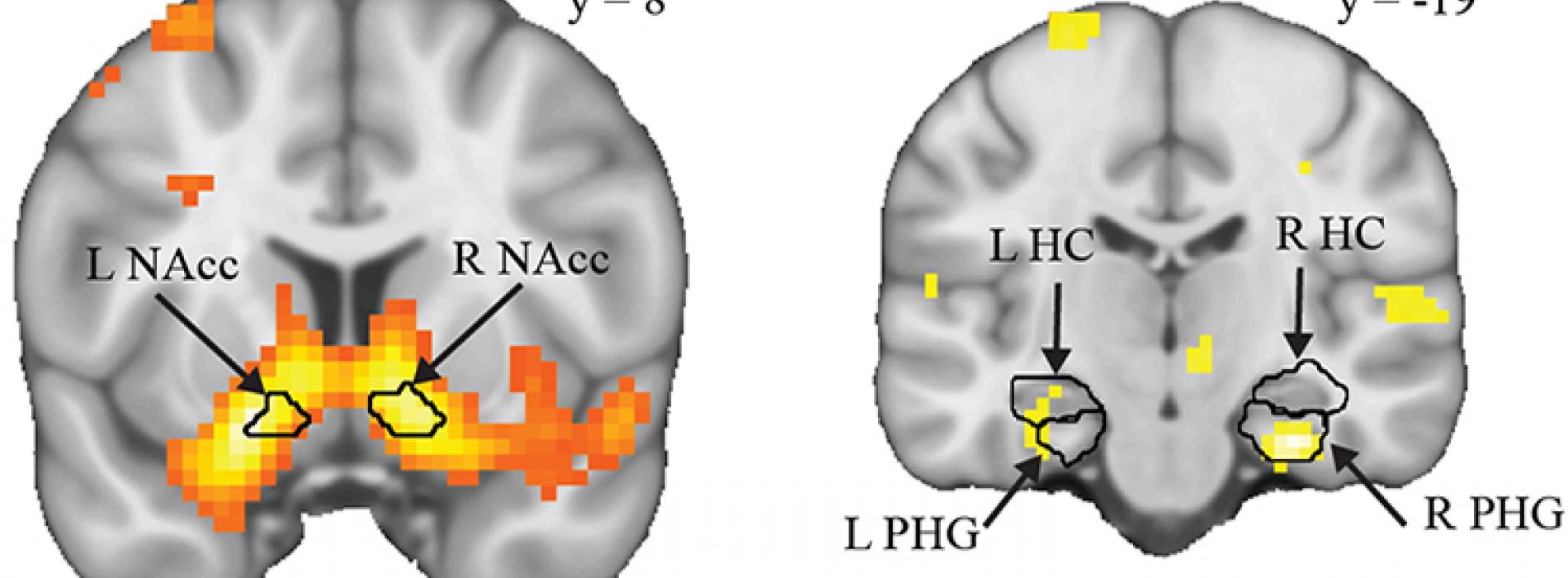
 News
News
A fair reward ensures a good memory
Photo: the optimization of memory encoding is the product of a neural dialogue between the reward circuit (left) and the memory circuit (right). © UNIGE
By deciphering the neural dialogue between the brain’s reward and memory networks, neuroscientists at UNIGE demonstrate that optimal memory performance requires an intermediate regime of reward delivery. A new finding highly relevant for a variety of learning situations.
How does our memory work and how can we optimize its mechanisms on a daily basis? This question is at the heart of many neuroscience research projects. Among the brain structures examined to better understand memory mechanisms, the reward system is now at the centre of investigations. Through the examination of brain activity in healthy human subjects, scientists from the University of Geneva (UNIGE) have highlighted the lasting positive effect of a reward - monetary, in this case - on the ability of individuals to retain a variety of information. Moreover, and much more surprisingly, the research team demonstrated that the average accumulation of reward should be neither too small nor too large. By ensuring an effective neural dialogue between the reward circuit and the memory circuit, this delicate balance allows the proper encoding of memories in our brain. These results can be read in Nature Communications.
Empirically, it seems quite logical that obtaining a reward can improve the memories associated with it. But what are the brain mechanisms at work, and how can we exploit them to optimize our memory capacity? “The positive influence of a reward on memory is a well-known phenomenon,” says Sophie Schwartz, full professor in the Department of Basic Neurosciences at the UNIGE Faculty of Medicine, who led this work. “However, our experiment aimed to take a further step in understanding this mechanism by looking at two important aspects: does the effect last over time and what role does the accumulation of reward play?”
A measured challenge to motivate the brain
To answer these questions, the scientists have developed an experiment using functional magnetic resonance imaging, an imaging technique that allows real-time observation of the brain in action. About 30 healthy subjects were asked to remember associations between objects and people; each correct answer was associated with points gained, and each incorrect answer with points lost (the points were then converted into money). Twenty minutes later, the subjects were asked to retrieve these associations to earn additional points. Critically, the average number of points that could be gained varied over the course of the experiment.
“Contrary to what one might have thought, the best results were not associated with the highest accumulation of rewards, the point where subjects should have been the most motivated”, says Kristoffer Aberg, a researcher now at the Weizmann Institute of Science and the first author of this work. The most effective? Somewhere between the highest and lowest accumulated rewards. “Our brain needs rewards to motivate us, but also challenges”, explains Sophie Schwartz. “If the task is too easy, motivation decreases as quickly as if it is too difficult, and that affects our ability to encode information. Imagine picking berries in the forest: if they are everywhere, you do not have to remember where to find them. If there are only a few, the effort required to pick them is too great in relation to the possible gain - a few berries will not feed us. Now, if clusters of berries are scattered throughout the forest, remembering their exact location will allow us to pick more in a short time.”
A dialogue between brain areas
In the brain, memory is primarily managed by the hippocampus, a region of the brain responsible for encoding and storing memories. When a reward is involved, however, another region is activated, the ventral tegmental area, which is involved in the reward system and responsible for the release of dopamine related to the satisfaction of obtaining a reward. “It is the dialogue between these two brain areas that helps maintain motivation, improve learning, and consolidate memories, even over time,” explains Kristoffer Aberg.
This experiment shows the importance of motivation in memory and learning, but also the subtle, and probably individual-specific, balance that should be instituted. These lessons are particularly useful in the school environment, with the idea of creating learning contexts that would foster this motivation according to the needs of children.